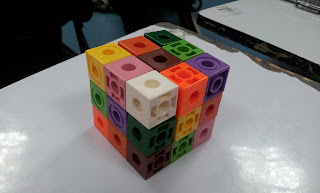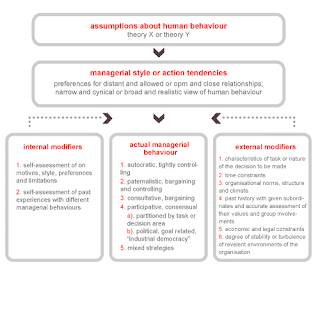In my previous post on
Need for management: Open Eyed and Blindfold approach , I had explained how Blindfold approach is the new approach to Management adopted by organizations today. This approach had led to a taller tower as the end result. However, there is more to this approach than what meets the eye.
Structuring the workforce
This is what was explained in the previous post where the work process was enlarged and workers were placed in each area corresponding to their skill set. At the top is the CEO, followed by Middle Management and then the workers.
Goal Setting
Once the skill set for each worker is identified, it is important to map these skills to a suitable task. Once this is done, the worker must identify his goals for performing that task.
A thing to note here is that one should always set
high goals and strive to
make them realistic. There is no such thing as Realistic Goals.
Achieving SMART Goals
In the process of making the goals realistic and achievable, the worker must pass his goals through the SMART Goals test.
If the goals follow this chart, they are termed as
Effective Goals
More on this:
Blog by Dr. Mandi
goals should not be so low that they diminish productivity and are not
compliant with the employee's ability and skill and on the other hand,
they should not be so high that they are not realistic anymore and
appear to be demotivating. The middle management should make sure that
competent goals are set keeping in mind the past performance, average
standards. This is done in all companies at the start of the appraisal
cycle where we are supposed to do the goal setting for the next cycle in
conformance with our skill, experience, past performance and project
requirements.
The management should also ensure that the work conditions are ambient
for the employee to give his maximum output. For eg, when people are
working in odd shifts, they are provided with adequate arrangements for
food, conveyance like cab services, maybe some relaxations along with
some extra allowance for odd shift.
In Production: Interaction amongst the top brass, mid-level management and employees
As the production/work starts, the top managemnt defines a strategy and
assumes a role where it exercises control over day to day operations at
an arm's distance i.e. overseeing it but not regularly interfering in
them. Their work is to interject at crucial points in the process. Their
invlovment can be in the form of direct communication, media/market
interaction, consulting with experts, govt, or industry as per the
situation. They should not be doing the micromanagement as their prime
duty is to decide on higher level questions and strategies of the
business.
The middle management is entrusted with this important job of constantly
monitoring the employee, progress and motivating them to achieve the
goals. Its their duty to keep a track of the performance and make sure
that the estimates are met. Alongwith that, they also have to ensure
that the employee satisfaction and motivation levels stay high and do
not deteriorate as the work pressure peaks.
Management Practices
There can be two approaches for getting work done from employees.
They come under 'carrots and sticks' policy. A management can follow any
of them or a combination. What it basically means it either employees
can be assumed to work out of motivations of greater responsibility,
rewards, appreciation& respect ie Carrots.
OR
It can be assumed that as nobody by nature wants to work or take
responsibility so some kind of threat or force need to used to get the
work done, in other words, Sticks.
It depends on the employee rather than the management that which approach should be applied.
End Result (or a Continuing Process?)
As checkpoints are covered gradually, the estimates might need to be
revised in accordance with the progress made. Upward revision indicates
that the management has been successful in making the employees reach
the best of their potential. This is an achievement and source of
professional satisfaction for both the employees and the managers.
Managers therefore always expect the employees to surpass their goals,
they are aware of the
Pygmalion effect,
so they try to motivate employees with rewards, appreciation,
recognition, which in turn instills the desire in the employees for
excelling beyond their set goals. This was demonstrated in the class
when the last couple of blocks were being placed over the stack in Tower
building game.
 |
| Upward revision of goals |
Downward revision means faulty management practices and are a symptom of a gap b/w the organisation and the employees.






















